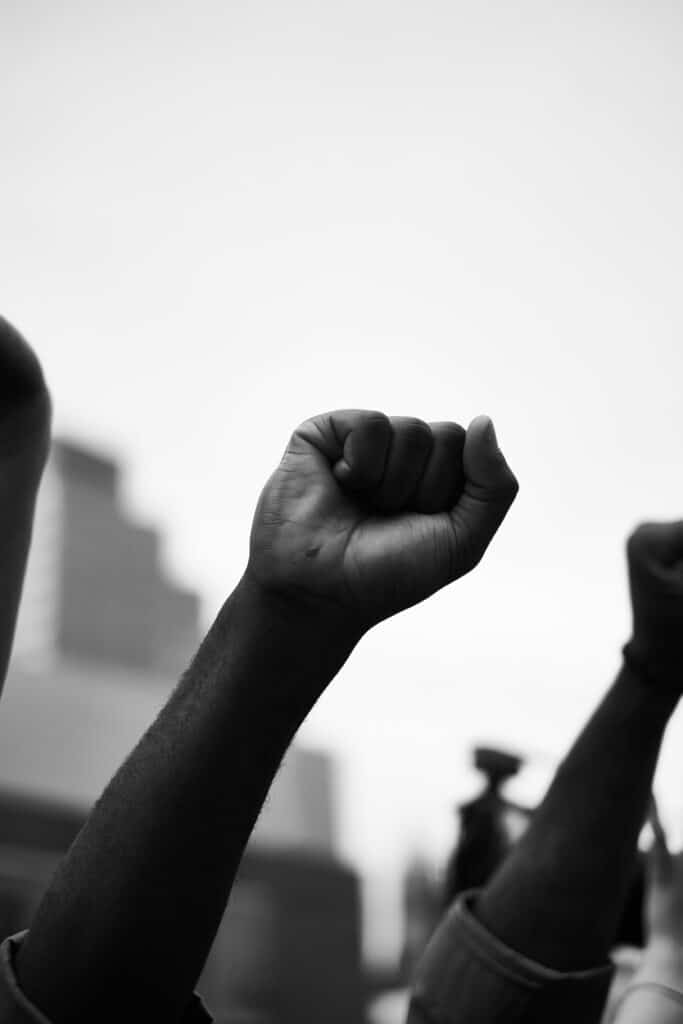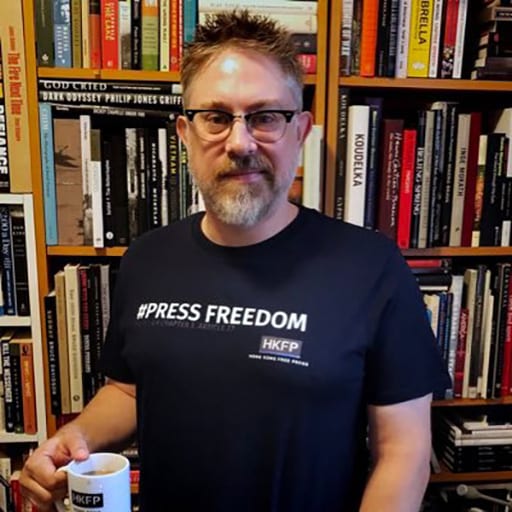Photographer Devin Allen grew up in West Baltimore in the 1980s during the height of the AIDS and crack epidemics, a time of mass incarcerations. In his childhood, his family tried to shield him from the reality of what was going on around him. The shield could not last forever though, and as he grew up, Devin Allen witnessed the loss of friends and community members to gun violence, prison, and drugs.
Devin Allen began to see what the city held in store for young men like him. But when his daughter was born in 2009, he realized that he had a reason to live, to survive and thrive for her. Around that time, while hosting open mic nights with his friend Josh, Allen began to photograph the poetry events using Josh’s old camera. He quickly fell in love.
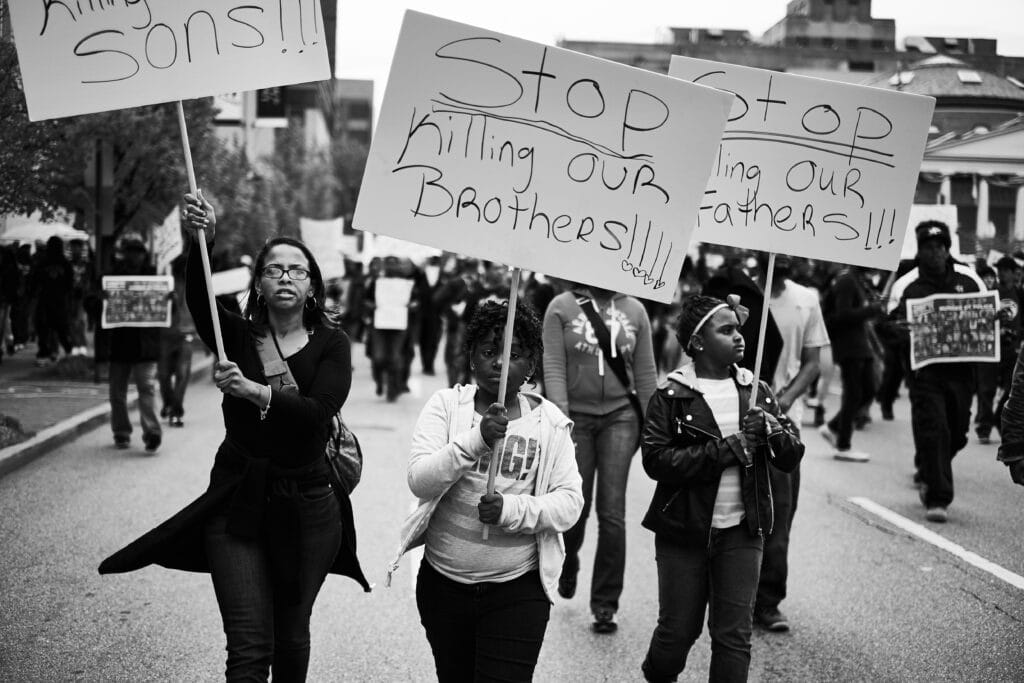
Devin Allen, documenting life
“I remember using my friend’s Nikon CoolPix camera and taking pictures and we would put them on tee-shirts. But I started loving the human interactions, how people would change when they get in front of a camera.”
Devin Allen began photographing everything he could around the city, including family portraits, test shots for models, and music videos for his friends. Nothing was beyond his camera’s lens.
In the process of learning about photography and his place in the medium, Allen began with a web search that would have great influence on his life and work:“
I Googled ‘famous Black photographers’ and Gordon Parks popped up … When I started diving down this rabbit hole, I was looking at the Muhammad Ali pictures and looking at all these different images,” Allen said. “ He was able to move in all these spaces. What really captivated me was when he was shooting the gangs in Harlem with the gang members, going to funerals with them. He photographed it … like he was a bystander, and it was so interesting. But at the same time, I was actually living those things … I said, ‘Well, if he can do that, I can do that’ … So I just started documenting everything around me.”
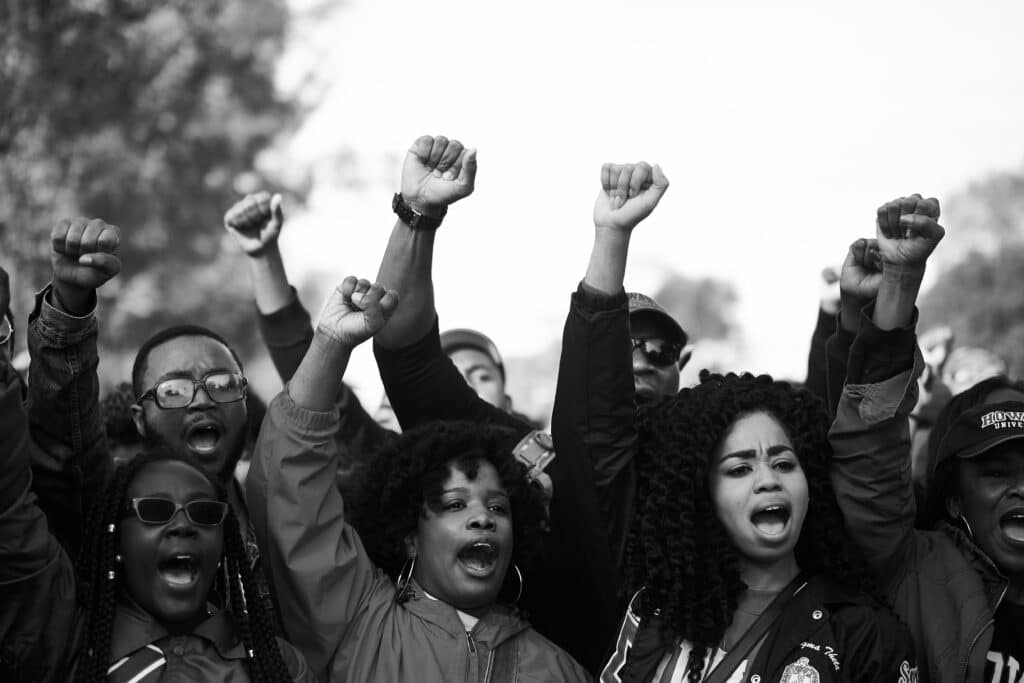
Image as a witness
The struggles faced by African Americans, which Parks worked to document throughout his career, would also become central to Devin Allen’s own work.
On April 12, 2015, 25-year-old Freddie Gray was arrested by the Baltimore Police Department over his legal possession of a knife. He was placed in the back of a transport van, but was not secured, contrary to police department protocols.
Gray was badly injured as he was driven around the city and finally to the police department. Gray died seven days later on April 19 due to the spinal cord injuries he sustained while in police custody.
Protestors took to the streets, Devin Allen among them with his camera in hand. A photo he made of a man running in front of a line of police officers as they marched up the street went viral. That led to its landing on the cover of Time magazine, making him only the third amateur photographer to grace the storied magazine’s cover.
The fame Devin Allen received for the photograph came on fast. He quickly became the point person for many of the major networks; ABC, CNN, NBC, and the rest were all focused on Baltimore at the time. But Allen also realized that the fame could be fleeting, and that once the protests ended in the city, the news outlets would move onto the next story.
So while he continued to work as a photographer in Baltimore, he also made a plan for how to use his celebrity to help the community he cares so much about. It started in the form of a $20,000 grant from Russel Simmons and his team. With it, Devin Allen set out to train the next generation.
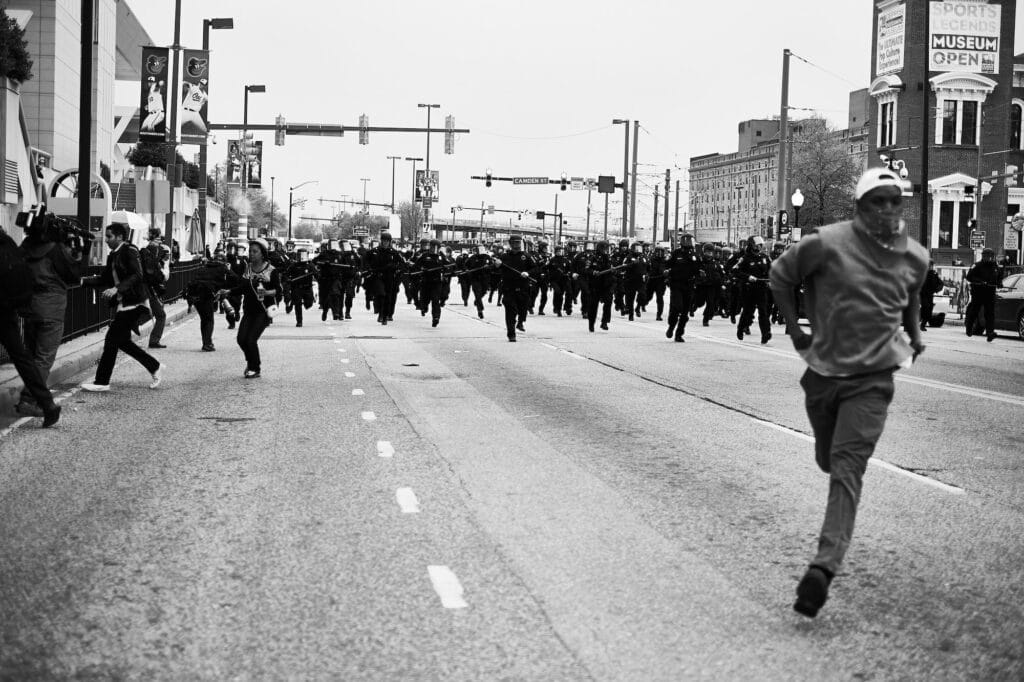
“I started teaching kids in West Baltimore how to do photography, how to take the narrative back,” he said. “At the end of the day, my career has been catapulted off of the death of Freddie Gray … so what can I do? Give back to the same community that launched my career … I didn’t know what I was doing. It was literally, ‘I love photography, I hope y’all love it,’ and I started working. I decided to stay in Baltimore after that, and I have just been teaching and gifting kids with photography ever since.”
Devin Allen, “I’m just the eyes, but there’s so many different ways of thinking.”
Teaching the kids to document their community and themselves, and put their voices into the work, is a tenet of Devin Allen’s own work.“
Being from Baltimore, the home of The Wire and all these things, everywhere I go, I’ve been told about how Baltimore is. I never got to speak for myself … What I wanted to do with this book is control my own narrative. I tell you what is real and what is not. Not just ‘Baltimore is dangerous, don’t come. It’s disgusting. There’s no love there.’ I’m going to show you through my photos that there is love here. ‘Oh, Black people don’t care about their communities.’ I want to show you differently. When I say take ‘Take that narrative back,’ it’s not allowing others’ narratives, that are not from the community, to tell your own stories. It’s empowering, taking your story back and speaking for yourself.”
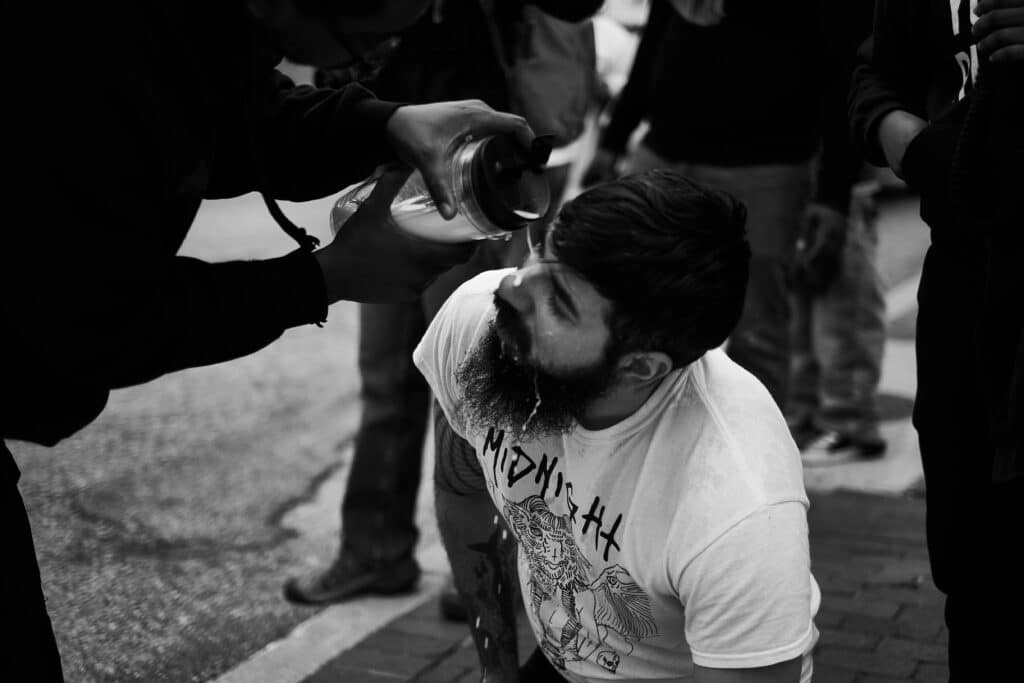
In No Justice, No Peace, this is exactly what Devin Allen has done with the Black Lives Matter protests in Baltimore.
Along with his photographs of the protests, Devin Allen wanted to present diverse perspectives from the spaces he has documented. To do so, No Justice, No Peace contains essays from roughly two dozen writers reflecting and commenting on a number of different topics around civil rights and the Black Lives Matter movement.
Devin Allen worked with his editors to ensure the diversity of the writers, not just in aspects like gender and sexual orientation, but also in finding people of various demographics with different ways of thinking. He wanted to allow the writers to speak for themselves, while at the same time creating an emotional roller-coaster for people to ride as they go through the book.
“I’m just the eyes, but there’s so many different ways of thinking. So I worked with Brea Baker to pull a lot of the writers in. The biggest thing was, I wanted everyone to be their [own] self, so I didn’t want to bring in writers that were going to conform to my way of thinking.”
No Justice, No Peace became the story of the community, and the chance for community members to tell their own story in their own words.“
Civil rights and Black Lives Matter are very complex because there’s so many things that are needed and things that need to be liberated. I don’t need to understand everything as an artist, but I know right from wrong. Photography is always just a vehicle and a platform to amplify other people’s voices. That’s what I tried to do with this book.”
Camera as a weapon
Interspersed throughout the book is the work of Gordon Parks. Parks’s photographs work to anchor Allen’s photographs to their place in a photo-historical context. You can see Devin Allen’s work as an extension of Parks’s, and a continuation of the documentation of the Civil Rights Movement of the 1950s and 1960s.
This connection also links the work of the writers to those of the past as well. Malcolm X and Martin Luther King, Jr. both show up in Parks’s photographs.
The two men’s speeches and writings continue to resonate with readers today, just as they did with the audiences listening in Parks’s photographs. And just like them, the authors in Devin Allen’s book are looking to tell their own narratives about the Black Lives Matter movement today and create change.
In the end, the combination of photographs and words is also a statement Allen is making about creating change: there is more than one way.
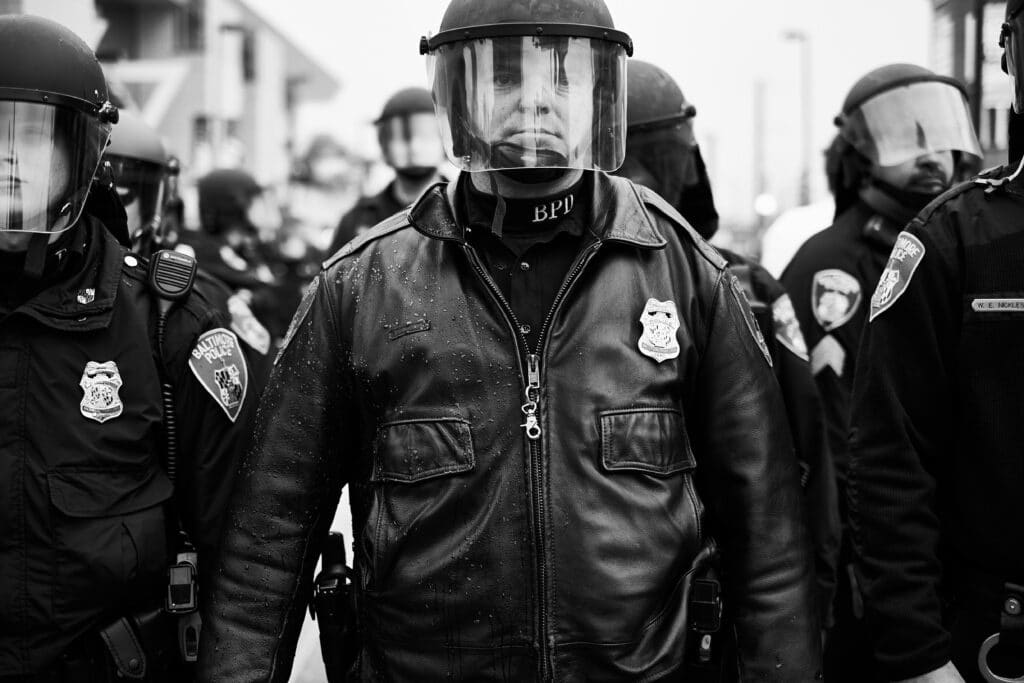
“The biggest thing I tell people is ‘No feet are too small.’ Everybody feels like they’re too small to make change and things are just out of their control. I want to tell everybody, whatever your gift is, activism is nothing but making that gift accessible to change. I’m a photographer and that’s my calling, and I lend that in my time and my heart to change. If you are a writer, put your pens to the pad. If you are a motivational speaker, speak on it … But don’t ever think that you’re too small to make change or amplify other people’s voices … That’s why Gordon Parks’s quote is, ‘I use the camera. That’s my weapon, that’s my choice of weapon.’ We all have weapons, so utilize them for the change you want to see.”
No Justice, No Peace is published by Legacy Lit and can be purchased on their website.

